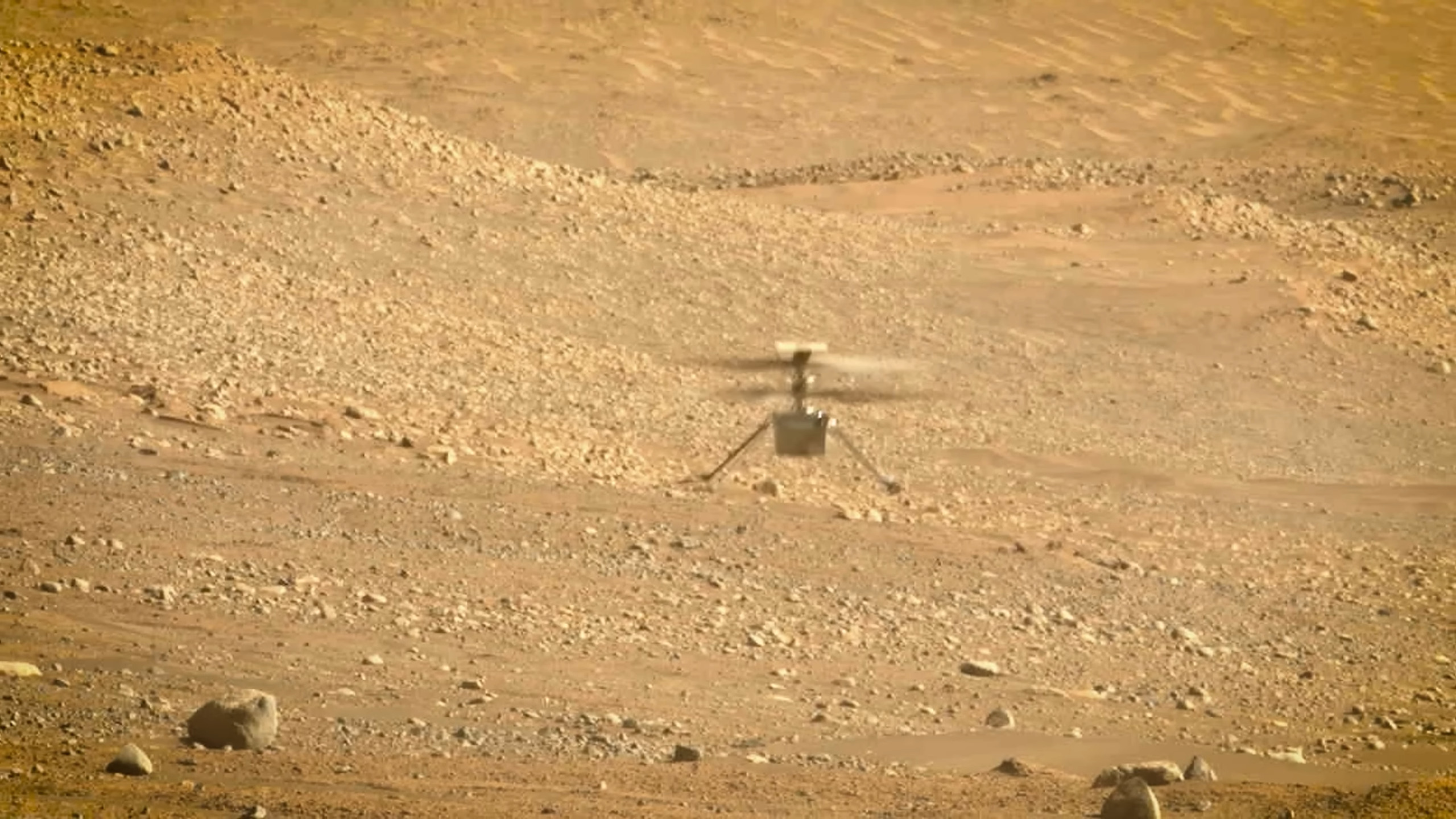Mars helicopter borked, broken, an ex-helicopter, now abandoned and alone
Was I a good Mars helicopter? No, little one. I'm told you were the best.

Space fans prepare yourselves, for I have some sad news: NASA's Mars-based helicopter, Ingenuity, has flown its last, thanks to a broken rotor blade. It is now an ex-helicopter, or if you prefer, the little space helicopter that no longer could. Pour one out for a true original, and give mad respect to the first aircraft on another planet that shall take to the skies no more.
After completing its 72nd flight on the Martian surface, NASA scientists reviewing images from Ingenuity's onboard camera made the sad discovery that one or more of its rotor blades were damaged (via Gizmodo) and made the decision that the helicopter will no longer be able to fly.
This marks the end of a remarkably tough little aircraft that was originally only designed to perform five test flights, but now is consigned to the lonely Martian graveyard of dead technology and broken dreams.
Alright, it's a bit much, I know. But Ingenuity's story is one of engineering triumph, and it's likely to go down in history as one of the more successful tests of exploratory vehicles catapulted to the red planet.
Launched in February 2021 attached to the belly of the Perseverance Mars rover (charmingly nicknamed "Percy"), the 19-inch tall helicopter weighed in at a miniscule four pounds, and once detached from its host became the first powered and controlled aircraft to fly on another planet.
While it's tempting to think of Ingenuity as a glorified drone, the engineering challenges that needed to be overcome to allow a helicopter to fly in the thin Martian atmosphere were immense. Mars has a 95% carbon dioxide atmosphere that's only 0.6% the density of the air on Earth, which meant that Ingenuity had to be extraordinarily light and generate huge amounts of lift for its size in order to fly at all.
This was achieved by employing a twin contra-rotating rotor design and the efficient use of carbon fibre in the construction, and it was this, along with six powerful DC motors and six solar-charged Sony Li ion batteries, that meant Ingenuity put out a remarkable amount of lift for its diminutive size.
The biggest gaming news, reviews and hardware deals
Keep up to date with the most important stories and the best deals, as picked by the PC Gamer team.
Interestingly, flight duration was not limited to the available battery charge from the top-mounted solar panel but instead to the thermal constraints of the motors, as they rose from temperatures well below freezing to over 100 degrees C over a short flight. That's one of those NASA facts that makes you want to punch the air isn't it, or is that just me?
No, just me then. Carrying on.
Ingenuity also had to be capable of autonomous control, and while NASA engineers uploaded precise instructions to the little helicopter before each flight as to what the parameters should look like, after that it was down to the algorithms on the onboard computer to adjust to changing environmental conditions. This system worked fantastically well, and Ingenuity was able to capture many stunning photos of the Martian surface using its two onboard cameras over its 72 flights.
Can you spot @NASAPersevere?Ingenuity completed Flight 51 over the weekend, snapping a special cameo of the rover from 40 ft (12m) in the air. On this flight, the #MarsHelicopter traveled 617 ft (188 meters) for 136.89 seconds. https://t.co/1CXIWdYIAQ pic.twitter.com/Oyi6hkucPvApril 25, 2023

Best gaming PC: The top pre-built machines.
Best gaming laptop: Great devices for mobile gaming.
Sadly it seems that Ingenuity shall fly no more, although it shall likely go down in history as another of NASA's Mars exploration devices that not just met their goals, but exceeded them as well. Perseverance is still merrily chugging away on the Martian surface, recently passing the 1,000 Martian-day marker, and shows no signs of stopping in its mission to explore and survey the mysterious planet.
Meanwhile, Curiosity, an earlier Mars rover of similar design to Perseverance, has been operational since August 2012 and is still transmitting back regular updates and photos, some of which can be found here.
All of us shall fade one day, like dust in the wind. But few shall be remembered like the little Mars helicopter that could, and so today, we tip our collective caps to its memory.
Rest in peace, little buddy. You shall fly no more, but the impact you made to science, and the images you sent back that captured our collective imaginations, will live on for years to come.

Andy built his first gaming PC at the tender age of 12, when IDE cables were a thing and high resolution wasn't—and he hasn't stopped since. Now working as a hardware writer for PC Gamer, Andy's been jumping around the world attending product launches and trade shows, all the while reviewing every bit of PC hardware he can get his hands on. You name it, if it's interesting hardware he'll write words about it, with opinions and everything.


